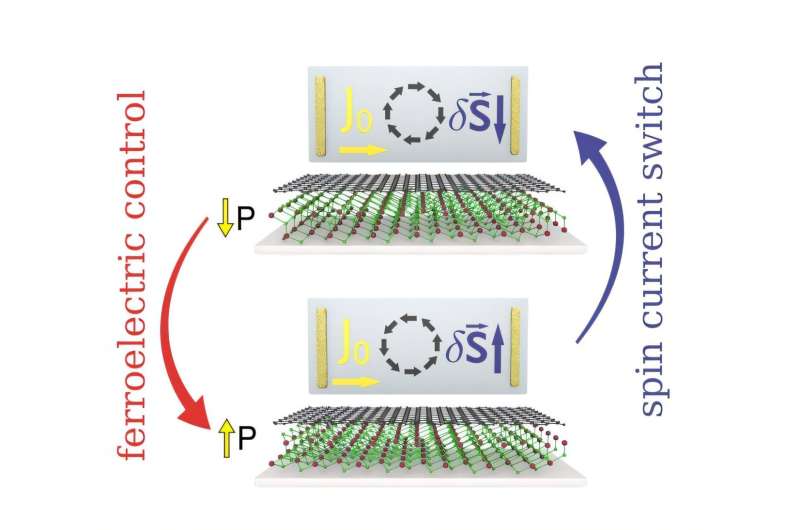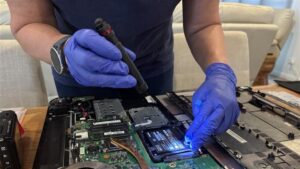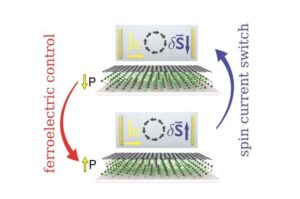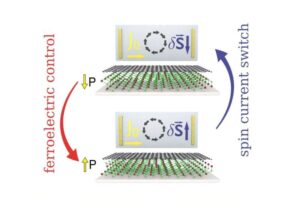
A collaborative team of researchers from the Slovak Academy of Sciences has developed a groundbreaking method to control spin currents in graphene through ferroelectric switching. This innovative approach, published on November 14, 2025, in the journal Materials Futures, showcases how coupling graphene with a ferroelectric monolayer of In2Se3 can effectively reverse the direction of spin currents.
The study employs advanced first-principles and tight-binding simulations to demonstrate that the ferroelectric switching can serve as an electrical spin switch. This discovery points to a significant leap forward in the development of energy-efficient, nonvolatile, and magnet-free spintronic devices, paving the way for next-generation spin-based logic and memory systems.
Advancements in Spintronics and the Role of Graphene
Spintronics has gained attention over the past twenty years as a promising avenue in nanoelectronics. By utilizing the intrinsic angular momentum, or spin, of electrons, researchers aim to enhance information processing and storage capabilities. Unlike traditional charge-based electronics, spintronic devices have the potential to drastically reduce power consumption and heat generation while offering faster operation and nonvolatile data retention.
Despite notable advancements in both materials and device architectures, a primary challenge remains: achieving effective control of spin currents without relying on external magnetic fields. The use of magnetic manipulation, while effective, raises concerns regarding scalability, energy efficiency, and compatibility with existing semiconductor technologies. This is where two-dimensional (2D) materials, such as graphene, are gaining prominence.
With its remarkable electronic properties, including high mobility and long spin-relaxation times, graphene is a leading candidate for spintronics. However, the weak intrinsic spin-orbit coupling in graphene limits direct spin control. To address this, researchers have focused on van der Waals heterostructures, which involve stacking graphene with other 2D materials to induce novel functionalities through proximity effects.
Innovative Heterostructures and Findings
In this study, the research team introduced a new graphene/In2Se3 heterostructure platform that leverages the ferroelectric polarization of In2Se3 to modulate spin-orbit coupling in graphene. Their detailed electronic structure calculations revealed that reversing the ferroelectric polarization in the In2Se3 monolayer can switch the chirality of spin textures and the direction of spin currents.
At a perfectly aligned interface (0°), the system exhibits a conventional Rashba-Edelstein effect (REE), where an applied charge current generates a transverse spin accumulation aligned with the ferroelectric polarization. When the interface is twisted at 17.5°, the system transitions into a regime influenced by an unconventional Rashba-Edelstein effect (UREE). Here, the spin current aligns closely with the charge flow due to the emergence of a radial Rashba field, a phenomenon previously unattainable in planar graphene systems.
The implications of this research are profound. The findings lay the groundwork for developing graphene-based spin transistors that can be controlled via ferroelectric switching. This could enable the creation of high-speed, low-energy spin logic and memory devices.
Looking ahead, the research team emphasizes the importance of experimental validation to bring these theoretical results to fruition. The integration of 2D ferroelectric materials with graphene holds tremendous potential for advancing the field of spintronics, making electrically controlled, non-volatile devices a reality in the near future.
For more information on this research, refer to the article by Marko Milivojevic et al., titled “Ferroelectric switching control of spin current in graphene proximitized by In2Se3,” published in Materials Futures.







